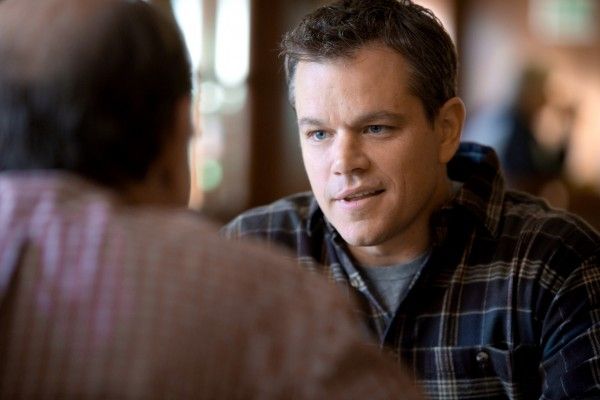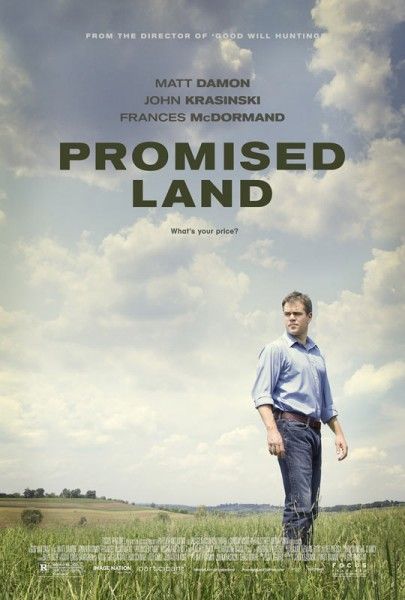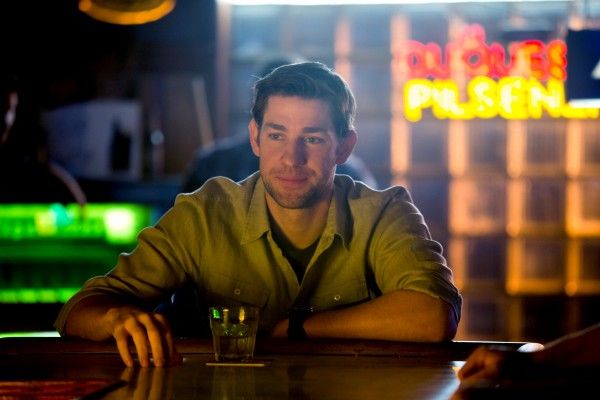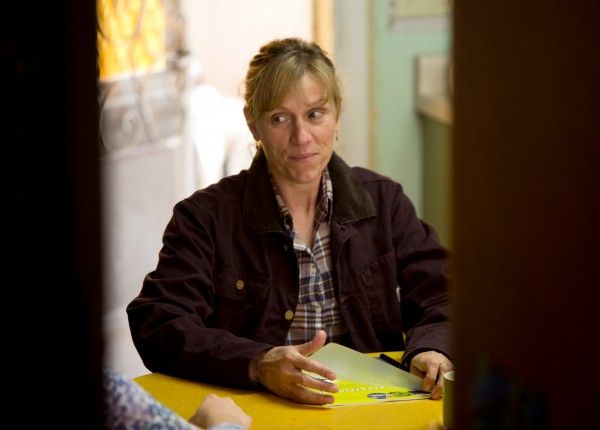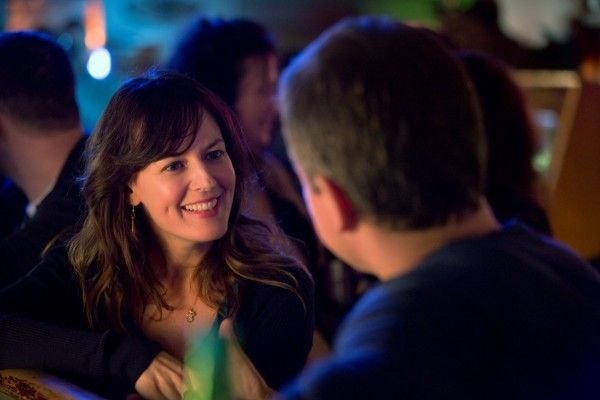From director Gus Van Sant, the small town drama Promised Land tells the story of Steve Butler (Matt Damon), a corporate salesman who has been dispatched to the rural town of McKinley with his sales partner (Frances McDormand) to see if the two can get the citizens to sign over the drilling rights to their properties. But, when an environmental activist (John Krasinski) arrives in town, the residents start to question what’s best for themselves and their community.
At the film’s press day, filmmaker Gus Van Sant spoke to Collider for this exclusive interview about why he ultimately decided to sign on as director, how they worked on the last quarter of the screenplay all the way through the production, that the film was only initially about 20 minutes longer than the final cut is now, how the test screening process effects the films that are being made now, that he’ll go to friends and filmmakers (such as Cameron Crowe and Steven Soderbergh) when he has questions about a cut, and his preference for film versus digital. Check out what he had to say after the jump.
Collider: When you got an email from Matt Damon saying, “Will you read this script?,” did you have any hesitation about signing on to direct, or would you have said yes regardless?
GUS VAN SANT: I have said no to other projects that Matt sent me. The thing about this one was that he had a hand in writing it, so I knew that it was probably something that I would like. Casey Affleck has actually written a few scripts that are always very, very human, very heartfelt stories. Matt, Ben and Casey all have similarities, in what they think is a movie. I don’t know where they got that. But, I knew it was going to be something similar to those other screenplays that I was used to reading. I almost didn’t hesitate, but then I thought, “Well, I better make sure.” But, it was great.
Had you been looking for a film, at that time?
VAN SANT: My film Restless had come out and hadn’t done well, and I was trying to paint, but that wasn’t happening very quickly. So, I was getting restless, and then he sent me that email. Part of it was that I had time, so I was like, “Yeah, let’s do it!” But, I did have to read the script first.
Was the script you read pretty much what the movie is that you made, or did you make any changes after signing on?
VAN SANT: Yeah, we were changing the last quarter of the screenplay, pretty much all the way through pre-production and even during the shoot. John [Krasinski] and Matt were working on it. They were responding to notes that different people had, including me, and they also had notes about it. They also felt that it needed something at the end.
Had there ever been more of a resolved ending on the film, or was it always left open?
VAN SANT: No, that was always open. I think they did have a draft where the vote was actually executed, but it was always open, in general.
Was it challenging to go into production on this so quickly and have a cut done so fast, or do you like doing it that way?
VAN SANT: I like doing it that way. You can start filming something today. You just start, and it has a nice spontaneous quality to it. Sometimes it’s hard, if you over-think things.
Was there a longer first cut of this film?
VAN SANT: No. I thought there was going to be. I kept telling John, “There’s too much dialogue. It’s going to be three hours long.” And then, the first cut was only two hours and five minutes. Now, it’s only an hour and 42 minutes. We made it shorter, but the first cut wasn’t very long.
Do you typically tend to have longer cuts of your films?
VAN SANT: I have in the past, yeah. My Own Private Idaho was a script that had 70 pages, but the cut was two and a half hours. We had to cut a bunch out. But, I think that’s just the way we shot it. We somehow over-extended scenes and added stuff to them.
Have you ever regretted cutting a lot of scenes out of any of your films?
VAN SANT: No because once you make the decision, it’s done. You don’t really regret it. Even if the movie is not performing well, I don’t really go back and say, “Oh, maybe it was that scene that I cut.” I don’t really do that.
How do you feel about the test screening process?
VAN SANT: I like showing an audience. Focus is pretty good because they’re not so glued to the numbers, but if it’s a bigger company, they tend to run their business by testing. They’re looking at the numbers, really specifically, as indications of what they should do. There’s so much artistic interpretation or audience interpretation that to rely on one or two tests with an audience, to explain what everybody is going to feel, it’s no longer a movie. It’s more like a sport. It’s easy to keep score at a football game because it’s just how many times you get the ball over the goal. But, when you ask an audience to tell us how many times the invisible ball got over the invisible goal, and they go, “Well, it was 46,” they’re just making it up. So, if you’re listening to that, as though you’re actually listening to the score of a football game, you’re misleading yourself. And that’s what they have to do because the corporations and the bigger movie companies are based on numbers.
All decisions are based on correct decisions, and if the correct decisions are all of a sudden numbers, then it’s tragic. There’s no room to be in inventive. There are pictures made by numbers. It’s led the companies into making family films and large-grossing films, and dumbing down the actual content, to the point where all they want to do is make large-grossing films, which is understandable. You always want to make a large-grossing film, but when it’s an absolute, then there’s only one kind of movie and your business is based on one kind of movie. Some people have claimed that it will destroy the business. I’m not sure if it will, but it makes it less interesting for everybody. It makes it more like fast food. There is a logic behind McDonald’s. If food service is based on how much money we can make, then you make the cheapest you can, that’s going to cost the most money and that the most people will go buy. That’s what we’re doing when we’re making the cheapest entertainment that’s going to perhaps be bad for you and the most people are going to go see it. It’s the same logic. But, do we want our whole movie diet based on that?
Are there friends or family whose opinions you always ask for?
VAN SANT: I show it to friends, yeah. In the case of this, I was very interested to hear what some fellow filmmakers thought. I know that they’re different filmmakers from myself, so they have different ideas. They’re interpreting it through their own thing, so I don’t take it verbatim. It’s their perception. Sometimes you have a specific question and you ask filmmakers, and their answers are very much them. We asked Cameron Crowe and Steven Soderbergh a question. Cameron’s answer was very Cameron Crowe. Soderbergh’s answer was very much as if it were a Soderbergh movie. So, then you go, “Okay, that’s what they would do. What would I do?” And in the end, you go, “Well, I should just do what I would do.” Unless you’re aiming for something very specific, your questions aren’t necessarily answerable. Sometimes you just want to know, “Did you understand that that guy was her brother?” And if they go, “I didn’t know that. That makes the story completely different,” that’s because you’re not explaining things clearly. Specific things are one thing. If you ask, “Artistically, should we have this one scene in the movie?,” people will come up with all kinds of answers with completely different reasons behind them.
Do you have a preference for film versus digital?
VAN SANT: We shot this on film just because film is still better. The actual invention of film has just been around longer. We’re used to it. The actual grain of film is sprayed on, like spray paint. It’s like this fuzzy, sprayed, air-brushed stuff. Digital isn’t as random. Digital is incremental, like a grid, so ti’s more uniform. You can add the spray later, in a program. But, they keep making new digital cameras that are receiving the signal in different ways with different lenses. There are different ways that the light goes into the surface of the chip that can make it do different things, but they’re still coming up with the best looking way. But, I have no real allegiance to either one. Digital information, for every type of storage, is unfounded. If everything is on a hard drive and the hard drive freezes up, your whole photography collection could just go away. We can still look at printed photographs of our grandparents. We can physically hold them in our hands and look at it. But, if our grandparents gave us a hard drive and we didn’t have the program to open it up, then it’s just lost. There’s something to having the physical thing there. Film doesn’t really last that long, so it’s not like it’s going to be that great either. Digital information, for music or film or any other storage device, is still unresearched and undeveloped, so they don’t really know what’s going to happen.
Do you have any idea what you’re going to do next?
VAN SANT: There are some ideas, but nothing is rock solid.
Promised Land is now playing in limited release and expanding this weekend.

